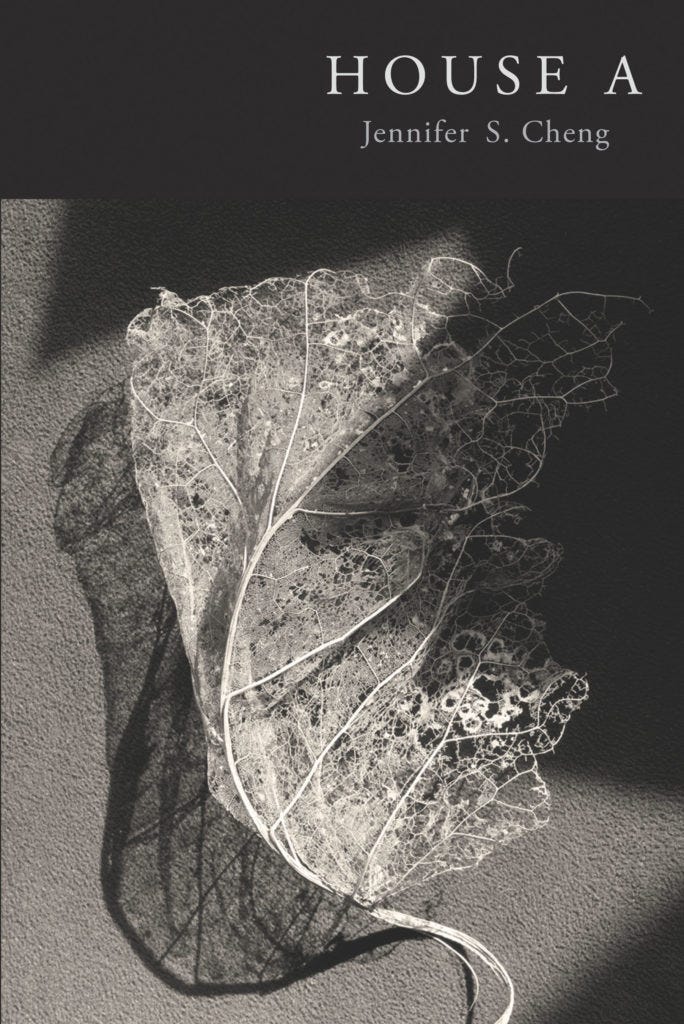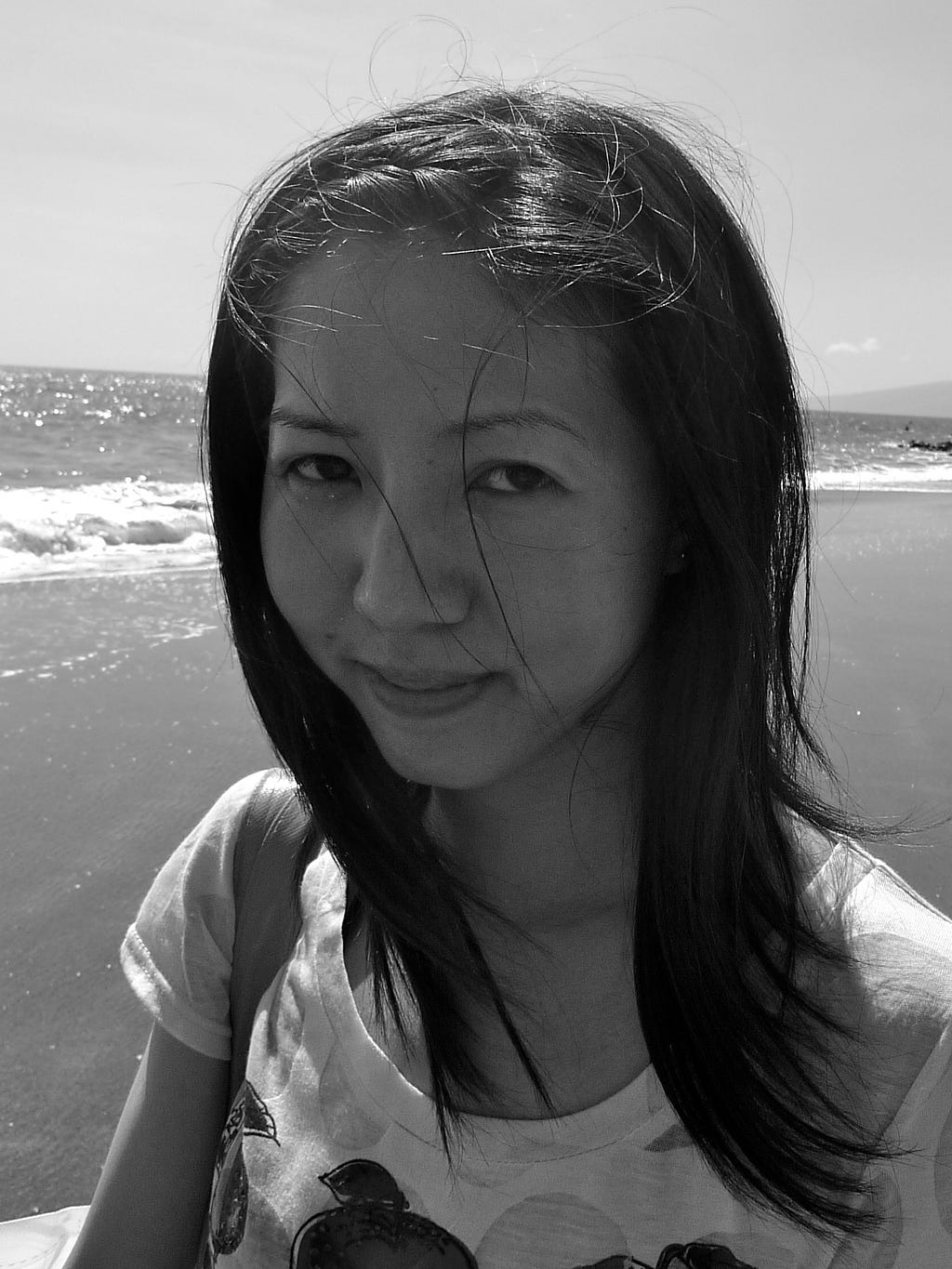
If we can posit, and I think we can, that the relationships we form between ourselves and the others that cross into and inhabit our personal orbits take place not only within space — space, that is, that manages to be simultaneously expansive and interstitial — but within the width and breadth of the words we choose as we communicate, within the scope of language itself, then perhaps we can posit that language itself is equal to space. Indeed, it is space, language, and relationships (to history, to the author/speaker’s immigrant parents) that Jennifer S. Cheng examines in House A, her collection of poetry and winner of the Omnidawn 1st/2nd Book Prize. The collection begins with a series of letters to Mao where the author takes on, in many ways, the role of both emotionally-invested party — it is, after all, in her father’s cabinet that she finds the picture of Mao that she addresses — as well as the role of the supposedly (supposedly, that is, in the popular mind) more objective “anthropologist who traces the longing for home between personal biography and the biography of the collective, a map that ends beyond locatable distances into mythical terrains, imaginary homelands.” Written at the end of a letter that discusses the “poetic forces” of sleeping insects and the “ritual of body and landscape” of migrating birds, Cheng seems to be suggesting that observation (by the anthropologist, by the self) may be intricately connected not only to the mapping of space and the language where the body takes place, but to the very formation of that space itself. Other vital, interconnected spaces explored by Cheng through the “Letters to Mao” sequence include water — crossing water, after all, is so often part of the immigrant experience — sleep (a necessary kind of restorative bodily space that stands, in House A, both as a stopping place in the mental mind, and as a place where truth can be grasped, only to be lost and grasped again), as well as a child’s acquisition of language and narrative. But it is also the nuances of language that the reader will encounter as she pages through the accrual of personal, mythological landscape that these letters represent, such as the distinctions between home (the constructed space of the self?) and homeland (origin?). As Cheng addresses Mao, “I want to describe for you the watery life of home, and by that I do not mean the ambiguity of homeland. For homeland is something embalmed in someone else’s memory, or it is a symbol, both close to the heart and a stranger you reach for in the middle of the night.” Whether this reaching out in the night takes place within wakefulness or within sleep remains itself a beautiful ambiguity, but we already have seen Cheng, elsewhere in “Letters to Mao,” writes, “If sleep were a language, it would not sound like nothing but would instead materialize both longing and distance, history and myth.” Perhaps, we may surmise, this reaching out is in and of itself a kind of language, a way to form space with the body, to locate place within space, via language (or sound), such as in the practice of echolocation. (Echoes feature later on in House A.) But why write these letters at all? Cheng tells us (and Mao) that “what I am doing is trying to give you a history of water, which, like memory and sleep, is fluid and wafting in refracted light. History as water, so that I am giving you something that spreads.” What that something is may be knowledge itself, and more specifically, the sort of knowledge that contextualizes and charts, that places the immigrant body within swallowing terrain.
°

If “Letters to Mao” creates a metaphorical space for exploration and investigation out of language and paper, then “House A; Geometry B” might be said to further this aim by reminding the reader of the physical space occupied by language itself. Evoking echo and location, architecture and geometry, and, of course, house and home, Cheng creates in the book’s second sequence a sort of dictionary of definitions out of concrete images that serve to make the intangible tangible. But these definitions — the poetry is divided into sections preceded by each letter of the alphabet — don’t necessarily serve to divide one entry from another. Rather these entries create correspondences. As “House A; Geometry B” evokes a “house of seamed structure, / unseaming an undetermined space,” where the speaker/author wishes to “construct, say, a physical / manifestation of an interior state” and to “build a house to locate ourselves,” it also creates relationships between noun/concepts such as “father” and “water” and “sleep” and geometrical shapes such as “convex polyhedra” and “heptagon” and “nonagon.” In doing so, Cheng creates a blueprint out of drafted lines, and these lines manage to expand and constrict simultaneously. Because even as the speaker of these poems works within space to both establish and question location, this speaker lives, after all, on/in a particular plane of existence. As Cheng writes: “a body orbits; pathways between / furniture form a constellatory map. / corollary lines by which we hinge and / unhinge ourselves to corner lamplight, / flaxen wallpaper, a remembrance of / water pipes.” As we move through our lives, and through the world we inhabit, Cheng seems to be arguing, we are nonetheless tethered to the specific places, not only of our pasts and presents, but constantly re/making ourselves, and our spaces, within those contexts, in our presents and futures. But just how do we do this?
Language, or the sounds a language makes, comes to play here as well, as the body attempts to locate itself within space, even as space remains somewhat untraceable. Cheng writes: “enumerated imprecision, like counting / the way an echo divides into lights and / breaks.” “Reverberations of form, texture, directionality” also appear in this sequence, as does “not the lost house, not the forgotten / house, but the house of echoes.” The sequence ends with:
the body of articulation occurs through
a house.
“possible [metrics]: contact zone,
borderlands. language in construction
of multiple histories.”
let us iterate it until it is its own
baseline. dislocation as house. longing as
location.
Here, Cheng’s use of the verb ‘iterate,’ which evokes a process of creating multiple versions, versions which may or may not be compatible with each other, serves to remind the reader that home-building (whether in a literal or metaphorical sense), or any sort of space creation at all, is not a static occurrence but an ever-continuing process, in this case bound in longing — perhaps we can view this longing, within the wider scope of House A, as a longing connected to immigration — where the longing for house/home becomes the space itself.
°
1: your language of intimacy and the slant of
afternoon stratosphere 2: the study of how species
space themselves with respect to one another 3: if
sound had a surface, if language measured distance,
if the body was a metaphor for everything unsaid 4:
home-based sense of identity 5: interacting with
intimates 6: fossilization, one’s language cut
transversely and encased in time and atmosphere 7:
when I listen to someone speak, the vibration of
my own body 8: bone language
(from “How to Build an American Home”)
In “How to Build an American Home,” the final sequence of House A, the reader encounters an essayistic project that combines writing from the place of and about home, and more specifically, the concept of home as the daughter of immigrants, paired with black and white illustrations — aerial photographs, heavenly bodies, geometric and botanical drawings, x-rays, blueprints, and more. As the illustrations work to ground the writing within the wide scope of life on earth, as well as earth’s view into the solar system, the accompanying written passages serve to bind the reader to the specifics of home formation within language. What we start to encounter, as we move through the sequence, is the concept that the titular house of the collection is as much a human body, moving, living, existing through and within time, personal circumstances, and space, as it is any sort of sheltering structure built to house that body.
Elsewhere in the sequence we find: “A house is a body; it is not permeable. // Inside, we grow a forest of moon, marsh, bird. Outside, the world / looms large and flat as a paper hole in the ceilingspace.” Taking “a house is a body” literally may be a risk, but considering that Cheng also writes of house/ home in relation to “membrane” (“To say home is a whole that keeps us / apart from others; / a membrane cannot help insulating distance — “), “skin” (“In the shadow we have splintered, the skin is a curve / only I can gather, the weave of the grain only I can bear.”), and “anatomy” (“Children of those who parachute in / go about their days collecting answers to questions not yet posed: the creak / of a house breaking, a ritual of numbers, sound anatomy of her mother’s call…”), we may want to consider that at least a metaphorical bridge between dwelling and the body that dwells (in space, in language) is being forged.
That “How to Build an American Home” also concerns itself with a relationship to parents (specifically, immigrant parents who may be having their own issues with language, a subject that “How to Build an American Home” glosses in a few pages of beautiful, lucid poetry), who engender both the physical body of their child and provide for the shelter and environment of that body (“We will always hold those who kept us in the world / before we could fall out again.”) only seems to add to this possibility.
Here, and throughout House A, Jennifer S. Cheng engages with the twin concepts of house and home as she navigates both internal and external terrain to create a poetry that is as engaging as it is intelligent, that is both wide in scope even as it is tethered to specific circumstances related to being the daughter of immigrants, and that invites the reader to investigate their own spaces, their own origins, and the structures and concepts with which they order and populate their lives.
House A by Jennifer S. Cheng was originally published in DrunkenBoat on Medium, where people are continuing the conversation by highlighting and responding to this story.
